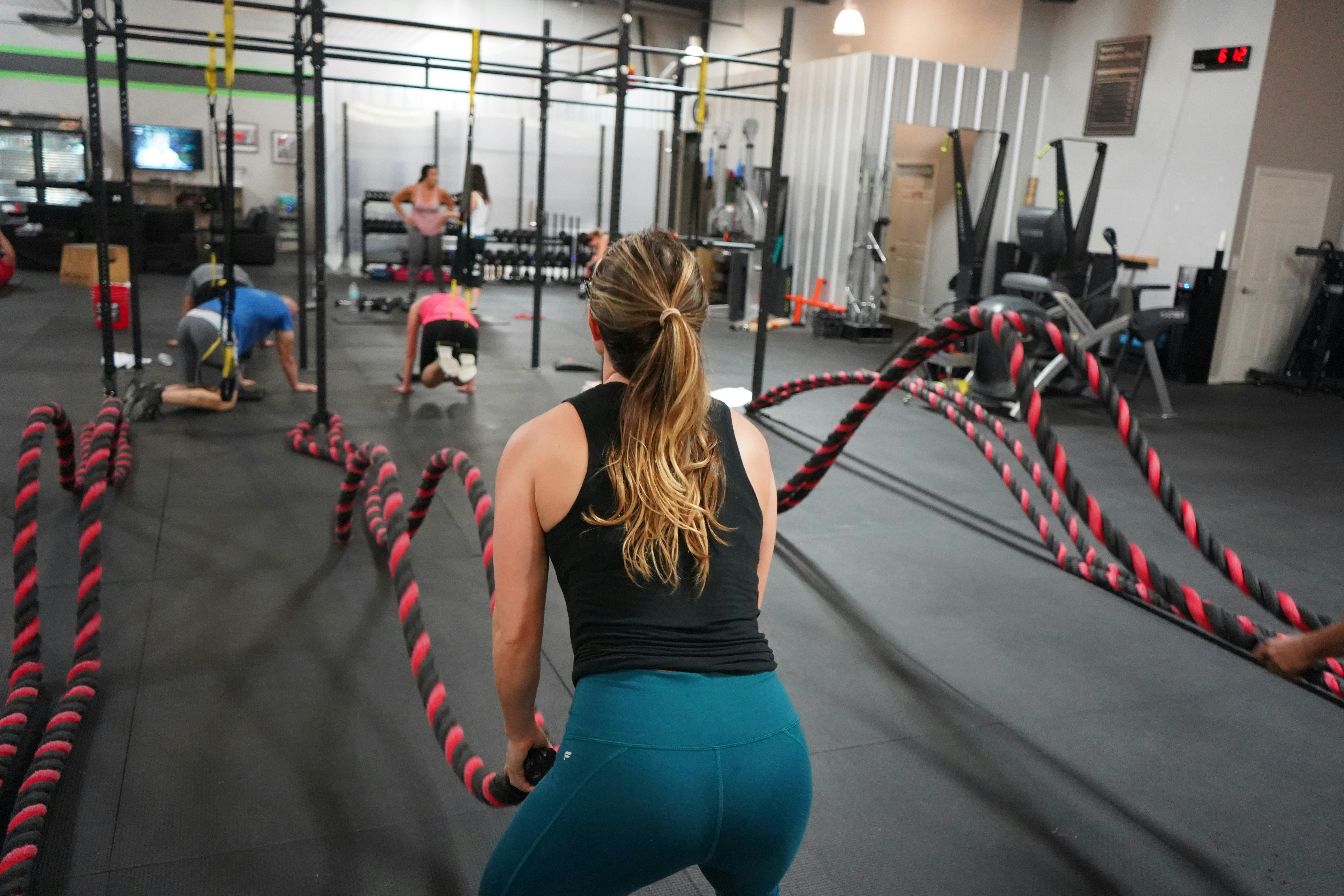Body Repair and Exercise Recommendations for Sedentary Individuals

Body Repair and Exercise Recommendations for Sedentary Individuals
Introduction
In today's modern lifestyle, many people spend long hours sitting at desks, in cars, or on couches. This sedentary behavior, also known as the "sedentary lifestyle," can have significant negative effects on our physical health. From poor posture and back pain to increased risk of chronic diseases like heart disease, obesity, and diabetes, sitting for extended periods can damage the body in various ways. Fortunately, incorporating regular physical activity into your daily routine can reverse some of these negative effects.
This article will explore the impact of prolonged sitting on the body, provide insights into the body's repair process, and offer exercise recommendations for those with a sedentary lifestyle to improve their health and well-being.
1. The Impact of Prolonged Sitting on the Body
Postural Issues
Sitting for long hours can lead to poor posture, which often results in musculoskeletal discomfort. Common postural issues include:
- Rounded Shoulders : When sitting for extended periods, people often slouch, which can cause the shoulders to round forward. This results in upper back and neck pain.
- Forward Head Posture : This occurs when the head protrudes forward while sitting, contributing to neck stiffness and headaches.
- Pelvic Imbalance : Sitting for long hours can lead to tight hip flexors, weakened glutes, and tight lower back muscles, contributing to imbalances in the pelvis and spinal alignment.
Increased Risk of Chronic Diseases
Prolonged sitting is linked to a higher risk of several chronic conditions:
- Cardiovascular Diseases : Sitting for long periods decreases circulation and can contribute to the development of heart disease.
- Obesity and Diabetes : Sedentary behavior slows metabolism, which can lead to weight gain, increased fat storage, and insulin resistance.
- Musculoskeletal Disorders : Extended sitting can lead to tight muscles, particularly in the hips, hamstrings, and lower back, which may increase the risk of injury when moving or engaging in physical activity.
Mental Health Impact
Sedentary behavior has been associated with higher levels of stress, anxiety, and depression. Physical activity stimulates the release of endorphins, which are natural mood enhancers. Sitting for long periods reduces the opportunity for these mood-boosting hormones to be released, potentially affecting mental health.
2. The Body's Repair Process After Prolonged Sitting
When you sit for extended periods, your muscles, joints, and cardiovascular system experience reduced activity. However, the body is resilient and can begin to repair and recover once you introduce movement. Here's how the body starts to heal:
- Improved Circulation : Physical activity helps increase blood flow, which brings nutrients and oxygen to muscles and tissues that have been underused due to prolonged sitting.
- Rehabilitation of Posture : Regular movement, stretching, and strength exercises can correct poor posture caused by long periods of sitting. Stretching the hip flexors and strengthening the back muscles are particularly beneficial.
- Restoration of Muscular Function : Sitting weakens certain muscle groups, such as the glutes, hamstrings, and core, while causing tightness in others, like the hip flexors and lower back muscles. Exercise helps restore muscle balance and function.
- Reduction of Inflammation : Prolonged sitting may lead to inflammation in the body, particularly in the back, hips, and legs. Regular movement and stretching can help reduce inflammation and relieve stiffness.
3. Exercise Recommendations for Sedentary Individuals
To combat the negative effects of prolonged sitting, incorporating regular physical activity into your daily routine is essential. Here are some effective exercises and habits that can help improve posture, reduce discomfort, and restore overall body function.
1. Desk Stretches
For those who spend a lot of time at a desk, performing desk stretches can help release muscle tension and improve circulation. These can be done throughout the day, especially during breaks.
- Neck Stretch : Sit tall and gently tilt your head toward one shoulder, feeling the stretch along the side of your neck. Hold for 15-30 seconds on each side.
- Shoulder Shrugs : Lift your shoulders toward your ears, hold for a moment, and then release them back down. Repeat for 10-15 reps.
- Seated Spinal Twist : Sit upright in your chair, place your right hand on the back of your chair, and twist your upper body to the right. Hold for 15-30 seconds, then repeat on the left side.
2. Hip Flexor Stretches
The hip flexors can become tight from prolonged sitting, leading to lower back discomfort and pelvic imbalance. Stretching the hip flexors can alleviate this tension.
- Lunge Stretch : Step one foot forward into a lunge position while keeping the other knee on the ground. Push your hips forward, feeling the stretch in the front of the hip on the back leg. Hold for 30 seconds on each side.
- Pigeon Pose : From a kneeling position, extend one leg forward and place the knee on the ground. Extend the opposite leg straight behind you, keeping your hips square. This stretches the hip flexors, glutes, and lower back.
3. Strengthening Exercises
In addition to stretching, strengthening exercises are crucial for counteracting the muscle imbalances caused by sitting. Focus on strengthening the core, glutes, and lower back muscles.
- Glute Bridges : Lie on your back with your knees bent and feet flat on the floor. Lift your hips toward the ceiling, squeezing your glutes at the top. Lower your hips back to the floor and repeat for 12-15 reps.
- Planks : Start in a forearm plank position with your body in a straight line from head to heels. Hold for 20-30 seconds, gradually increasing the time as you become stronger. Planks help strengthen the core and lower back.
- Superman Exercise : Lie face down with your arms extended in front of you. Lift your arms, chest, and legs off the ground simultaneously, holding the position for 5-10 seconds before lowering. Repeat for 12-15 reps. This exercise targets the lower back and glutes.
4. Cardio and Movement
It’s essential to incorporate cardiovascular exercises to improve circulation, prevent weight gain, and promote overall health. Some options include:
- Walking : Aim for at least 30 minutes of walking per day. Walking is a low-impact exercise that can be done anywhere, including during breaks at work.
- Cycling : Whether on a stationary bike or outdoors, cycling is a great way to get the heart rate up while improving leg strength and cardiovascular health.
- Swimming : Swimming is a full-body workout that is easy on the joints and provides an excellent cardiovascular workout.
5. Active Breaks
If your job or daily routine involves sitting for long hours, consider incorporating active breaks every 30-60 minutes. Get up, walk around, stretch, or perform a quick set of bodyweight exercises like squats or lunges.
4. Tips for Incorporating Exercise Into a Sedentary Lifestyle
- Set a Timer : Set an hourly reminder to get up and stretch, walk around, or perform a few exercises. This can help break up long periods of sitting and keep you active throughout the day.
- Use a Standing Desk : If possible, try using a standing desk or an adjustable desk that allows you to alternate between sitting and standing. This helps reduce the risks associated with prolonged sitting.
- Take the Stairs : If you work or live in a multi-story building, opt for the stairs instead of the elevator. This simple change can provide a good cardio workout and help strengthen your legs.
- Try Desk Yoga : Many yoga poses can be done at your desk or in a small space, such as seated forward bends or gentle twists. These poses help stretch tight muscles and improve posture.
- Incorporate Walking Meetings : If your work allows it, consider holding walking meetings with colleagues. This not only helps reduce sitting time but also boosts creativity and mental clarity.
5. Conclusion
A sedentary lifestyle can take a toll on your physical and mental health, but with the right approach, you can mitigate these effects. Regular movement, stretching, and strength exercises are essential for repairing the damage caused by prolonged sitting. By incorporating these exercises and habits into your daily routine, you can improve your posture, prevent injury, and enhance your overall well-being.
Remember that even small changes, such as taking active breaks, stretching at your desk, or walking more, can make a big difference over time. Prioritize movement and recovery to stay healthy and feel your best, even with a sedentary lifestyle.
References
- Katzmarzyk, P. T., & Lee, I. M. (2012). "Sedentary behaviour and life expectancy in the USA: A cause-deleted life table analysis." BMJ Open .
- Dunstan, D. W., et al. (2012). "Breaking up prolonged sitting reduces postprandial glucose and insulin responses." Diabetes Care .
- Vasilenko, A. (2017). "Physical activity and mental health: From research to practice." Health Psychology Review .




